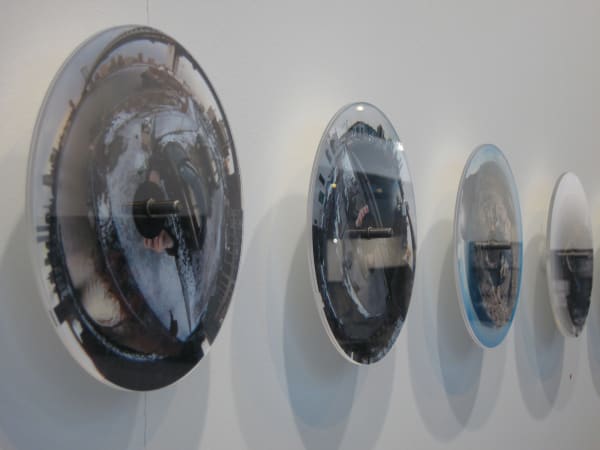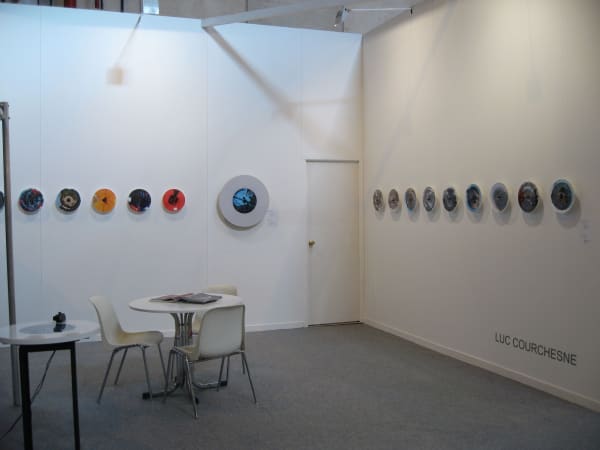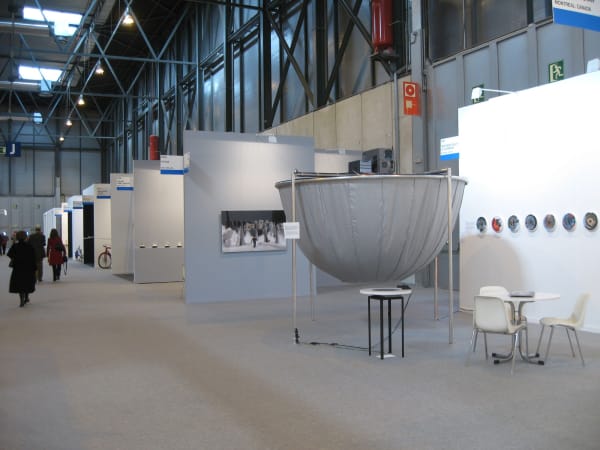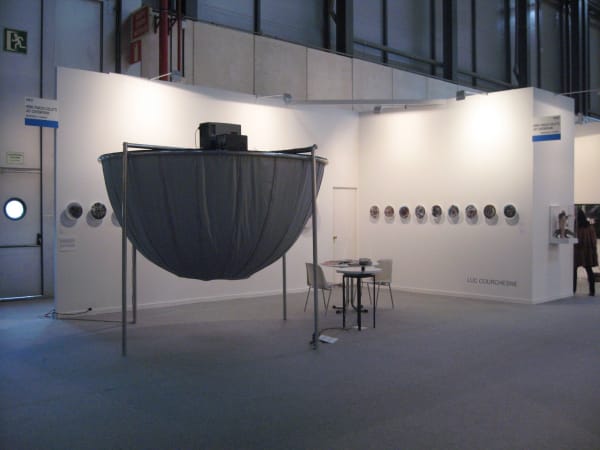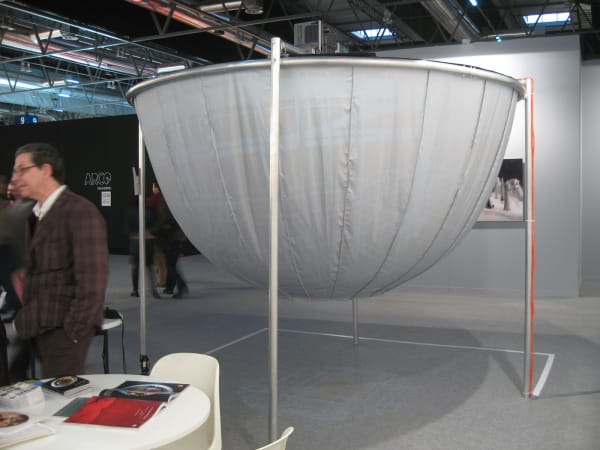February 15-19, 2007
ARCO’07, the International Contemporary Art Fair, Madrid
Pierre-François Ouellette art contemporain (Pabellón Hall 9 Stand PR27)
Projects: Luc Courchesne
Chosen by David Liss, directeur du Museum of Contemporary Canadian Art (MOCCA)
After the extensive series of interactive portraits which brought him a worldwide audience though the nineties, Courchesne’s recent work clearly focuses on immersive landscapes. In doing so, he helps bring media art in line with two great traditions in visual arts.
The Panoscopic Journal, undertaken by Courchesne in 1999, documents moments of his whereabouts as he travels to exhibit his interactive portraits and to develop immersive projection systems of his own. His goal with the Journal was, essentially then, to get familiar with the novel point of view offered by the catadioptric lens he was using. Throughout his expanding series of rotating panoramas, captured in still photography and now in video, Courchesne continues his Journal to question, more directly this time, the concept of place, the position of the observing subject, and the novel nature of the worlds one is now invited to step in. The works in the Panoscopic Journal can thus be seen as discrete and "switchable" micro-realities.
The Panoscope 360° (2000) is described by Courchesne as an immersive existence simulator; he invented this single channel panoramic projection system to let visitors navigate on their own in the 3D worlds he imagined. This visual immersion is obtained when a pre-distorted anamorphic rendering of the scene is projected downwards from above the viewing area onto an inverted dome where the scene’s visual coherence is restored. These pre-distorted anamorphic images have the same characteristics as those presented as rotating discs in the Panoscopic Journal.
In the Panoscope’s featured work Where are you? (2005) incoming visitors are invited into a multi-scale world to be explored interactively using an omni-directional pointer: At scale 0, the world looks like a simple 3D calibration grid. At scale +1, the world turns into an archive composed of pictures, sounds, texts and 3D objects. Zooming out at scale +2, elements of this archive become particles in a "molecular" world of self-organizing clouds of lights reminiscent of late 19th century impressionistic views of the world and of a nascent abstraction. Zooming yet further out at scale +3 reveals a landscape of mountains and valleys in tune with the 18th century idea of the picturesque sublime. At all these scales, visitors may encounter other inhabitants: live ones through telepresence links (if activated), pre-recorded subjects in video windows and, ultimately, themselves when a camera transmits their own image in this artificial world.
Luc Courchesne was born in 1952 in St-Léonard d’Aston, Québec. He received a Bachelor’s degree from the Nova Scotia College of Art and Design, Halifax (1974), and a Master of Science in Visual Studies from the Massachusetts Institute of Technology, Cambridge (1984). Courchesne began his explorations in interactive video in 1984 when he co-authored Elastic Movies, one of the earliest experiments in the field. He has since produced about 30 installation works and image series including: Encyclopedia Chiaroscuro (1987), Portrait One (1990), Family Portrait (1993), Hall of Shadows (1996), Landscape One (1997), Passages (1998), Rendez-vous… (1999), Panoscopic Journal (1999-), Panoscope 360° (2000), The Visitor: Living by Numbers (2001), Untitled (2004) and Where are you? (2005).
His work is part of major collections in North America, Europe and Asia and has been shown extensively in galleries and museums worldwide including: Sydney’s Art Gallery of New South Wales, New York’s Museum of Modern Art, Tokyo’s InterCommunication Center (ICC), Paris’ La Villette, Karlsruhe’s ZKM/Medienmuseum, Musée d’art contemporain in Montreal, National Gallery of Canada, Fundació La Caixa, Barcelona.
The Panoscope 360° and Where are you? were created with support from: Society for Arts and Technology; Université de Montréal; Idéaction inc.; Canadian Heritage; Institut de design Montreal; Canada Arts Council; Natural Science and Engineering Research Council; Fonds québécois de recherche sur la société et la culture; Fondation Daniel Langlois.
The gallery thanks le Bureau du Québec à Barcelone, the Department of Canadian Heritage (Trade Routes program), Société de développement des entreprises culturelles du Québec, the Canada Council for the arts and David Liss, director of the Museum of Contemporary Canadian Art (Toronto).
